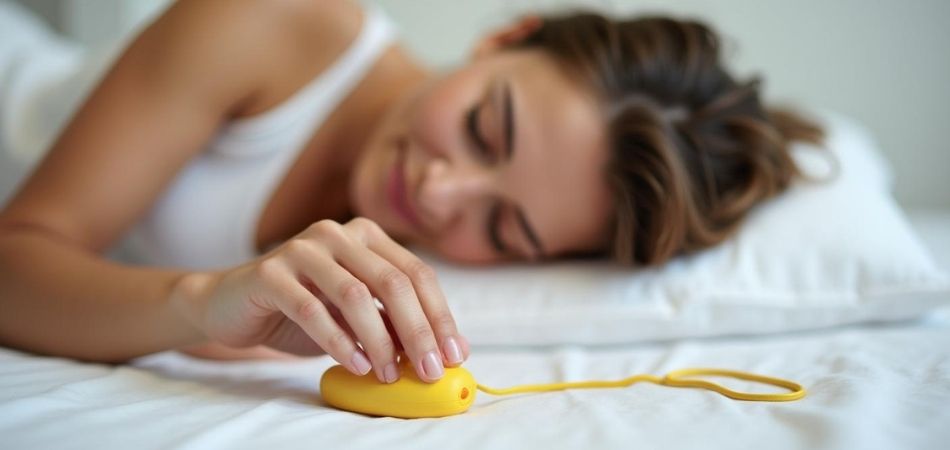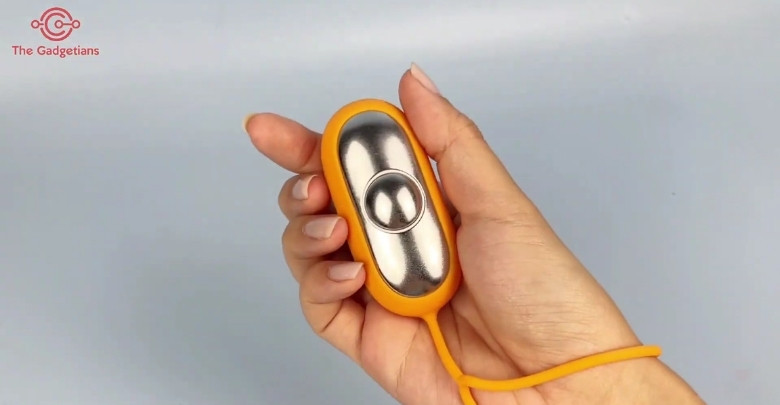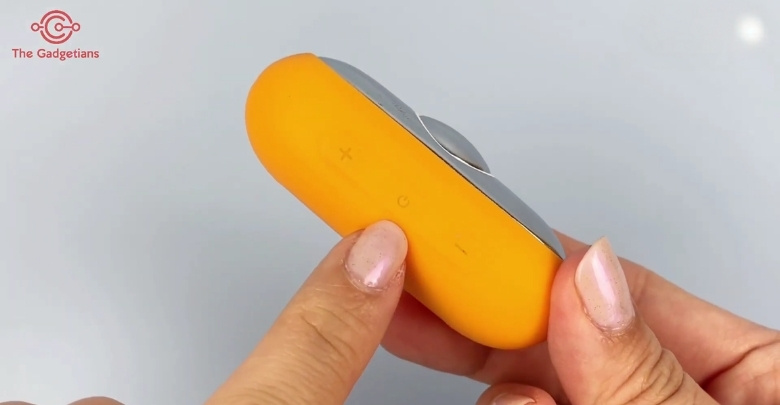Microcurrent sleep devices are small, handheld gadgets designed to deliver low-level electrical currents to the body, aiming to promote relaxation and improve sleep quality. But the question is: Do microcurrent sleep devices work?
Yes, microcurrent sleep devices may work for some individuals by improving their sleep quality and promoting relaxation. However, scientific evidence is limited, and results vary. Their effectiveness depends on personal factors and sensitivity to microcurrent stimulation.
Would you be interested in learning more about this topic? Keep reading as we explore the effectiveness of these devices and whether they could be the solution to your sleep troubles.
Do Microcurrent Sleep Devices Work?
Yes, microcurrent sleep devices may work for some people, but results vary. These devices use tiny electrical pulses to help the brain relax. Some users report falling asleep faster and waking up feeling more refreshed. However, scientific studies on their effectiveness are still limited.

Microcurrent technology has been used in health treatments for years. Now, it’s gaining attention for improving sleep and reducing stress naturally. Microcurrent devices like the Chill Pill claim to calm the nervous system, promoting deep rest. However, not everyone experiences the same level of improvement with these gadgets.
Many factors influence whether these devices work, including personal sensitivity to microcurrents. Some find relief from insomnia, while others notice little to no change. Experts say relaxation plays a key role in better sleep quality. Using these devices alongside good sleep habits may improve results.
If you’re struggling with sleep, trying one could be worth it. But remember, it’s not a guaranteed solution for everyone. Research is ongoing to understand their long-term effects. So, it would be wise to take advice from an expert before starting to use a chill pill.
Microcurrent Sleep Devices vs. Traditional Sleep Aids: Which One Is More Convenient?
Microcurrent sleep aids and traditional sleep aids can be used according to one’s preferences and needs. While microcurrent devices offer a drug-free approach, traditional sleep aids provide immediate effects. Below is a comparison of both options based on convenience and usability.
| Factor | Microcurrent Sleep Devices | Traditional Sleep Aids |
| Ease of Use | Simple to use, requires a one-time setup. | Easy to take, just swallow with water. |
| Side Effects | Minimal side effects, mostly mild sensations. | Can cause drowsiness, dependence, or grogginess. |
| Long-Term Use | Safe for daily use without major risks. | Risk of tolerance, addiction, or side effects. |
| Portability | Compact and easy to carry anywhere. | Requires carrying pills or prescriptions. |
| Natural Approach | Uses gentle electrical pulses for relaxation. | Often contains chemicals or synthetic ingredients. |
| Effectiveness | Works for some but varies per person. | Provides quick results for most users. |
| Cost Over Time | One-time investment with no recurring costs. | Recurring cost for refills or doctor visits. |
| Scientific Evidence | Limited but growing research on effectiveness. | Well-studied with proven short-term effects. |
| Sleep Dependency | Non-habit forming, no withdrawal issues. | Potential for dependence with long-term use. |
| Customizability | Adjustable intensity settings for personal needs. | Fixed dosage, may not suit everyone. |
Who Should Avoid Using Microcurrent Therapy?
Microcurrent therapy is a non-invasive method used to promote relaxation and improve sleep quality. While many people benefit from it, some should be cautious. Being aware of who should avoid it can help prevent unwanted side effects and health risks:

People with Pacemakers or Heart Conditions
Those with pacemakers should avoid microcurrent therapy as it may interfere with the device’s function. The small electrical pulses could cause unexpected heart rhythm changes. Individuals with serious heart conditions should always consult their doctor before trying any electrical stimulation therapy. Safety should always come first when dealing with heart-related concerns.
Those Unsure About Its Effectiveness
Microcurrent therapy may not work the same for everyone. Some people might see no improvement in sleep or relaxation. Devices like the Chill Pill claim to help with sleep through gentle electrical pulses. The scientific basis of the Chill Pill is still being explored, and results vary among users.
Pregnant Women
Expecting mothers should be cautious with any form of electrical stimulation. There is limited research on how microcurrent therapy affects pregnancy. It’s always best to consult a doctor before using such devices. Avoiding unnecessary risks ensures the safety of both mother and baby.
People With Epilepsy or Seizure Disorders
Microcurrent therapy may trigger seizures in individuals with epilepsy or related conditions. Electrical stimulation can sometimes affect brain activity in unpredictable ways. Those with a history of seizures should consult a healthcare professional before trying it. Prioritizing health and safety is always important.
Individuals With Metal Implants
People with metal implants should avoid microcurrent therapy due to possible interference. The electrical signals might interact with metal components inside the body. This could lead to discomfort or unexpected reactions. Consulting a doctor before use is highly recommended.
Children and Young Teens
Young children should not use microcurrent therapy without medical advice. Their nervous systems are still developing and may react differently. Research on microcurrent effects in children is very limited. Parents should always seek professional guidance before considering it.
Are There Any Long-Term Risks of Using Microcurrent Sleep Devices?
No, there are no well-established long-term risks for most users of microcurrent sleep devices, but caution is needed. These devices are generally considered safe for short-term use and offer a non-invasive solution. However, as with any new technology, it’s important to understand the potential risks and proceed carefully.
Microcurrent sleep devices like the chill pill aim to promote better sleep with gentle electrical pulses, but not everyone reacts the same way. Some people may experience mild discomfort, and side effects of Chill Pill, such as tingling sensations, are usually minor and temporary. However, it’s essential to listen to your body and stop using it if needed.
Long-term studies on microcurrent sleep devices are still limited, and more research is needed for conclusive findings. Overuse or improper use could lead to minor skin irritation or discomfort. To avoid potential risks, it’s wise to follow the manufacturer’s instructions and consult a doctor for ongoing concerns.
What Features Should You Look for in a Microcurrent Sleep Device?
You can improve sleep quality by choosing the right microcurrent sleep device. With many options available, being aware of key features is important. Here are essential factors to consider before making a purchase.

Adjustable Intensity Levels
Different people have different sensitivity to microcurrents, so adjustable intensity settings are important. A good device allows users to control stimulation levels easily. Lower settings work best for beginners, while higher levels may suit experienced users. Flexibility ensures a comfortable and personalized experience.
Ease of Use
A sleep device should be simple to operate, even for first-time users. Complicated settings can make it hard to use regularly. Clear instructions and user-friendly buttons improve convenience. A straightforward design enhances the overall experience.
Battery Life and Charging Options
Long battery life ensures uninterrupted use throughout the night. A device with rechargeable batteries reduces the hassle of frequent replacements. Some models offer fast charging, which is useful for busy users. Always check battery performance before purchasing.
Portability and Design
A compact and lightweight device is ideal for travel or everyday use. Small designs fit comfortably in the hand or under a pillow. Portability allows users to maintain their sleep routine anywhere. Sleek designs add to convenience and comfort.
Safety Features
A good microcurrent sleep device should have built-in safety measures. Automatic shut-off prevents excessive use and ensures safe operation. Overuse protection reduces the risk of unwanted effects. Always check safety certifications for added reliability.
Customizable Programs
Some devices offer different sleep modes based on individual needs. Customizable programs provide options for relaxation, deep sleep, or stress relief. Personalization improves the effectiveness of the device. Finding the right program enhances sleep benefits.
Scientific Backing and Reviews
A well-researched device with positive customer reviews is more trustworthy. Scientific studies supporting the product add to its credibility. Real user feedback helps in understanding actual performance. Always read reviews before making a final decision.
Frequently Asked Questions
Microcurrent sleep devices have gained attention for their potential to improve sleep and relaxation. While many people are curious about how they work, there are still questions surrounding their usage, effectiveness, and overall safety. Below are some of the most common questions about microcurrent sleep devices to help you understand them better.
How Do Microcurrent Sleep Devices Work?
Microcurrent sleep devices deliver low-level electrical currents to the body, which may help relax the nervous system. These gentle pulses can stimulate certain areas, potentially improving sleep quality. Many users report feeling calmer after using them, which helps them fall asleep faster. However, individual responses vary, and results depend on sensitivity to microcurrent stimulation.
Can Microcurrent Sleep Devices Help With Insomnia?
Some people with insomnia have experienced better sleep using microcurrent sleep devices. These devices aim to relax the nervous system, which may reduce stress-related sleep issues. However, their effectiveness depends on personal factors, and they should not replace medical treatment for chronic insomnia. Consulting a healthcare professional is always recommended.
How Long Does It Take to See Results?
Results can vary, with some users noticing improvements within a few days. Others may need a few weeks of consistent use. The key is regular use and combining it with good sleep habits. If no improvement is seen, alternative sleep solutions should be considered.
Do Microcurrent Sleep Devices Work for Everyone?
No, the results are not the same for every user. While some people experience significant improvements in sleep, others may not notice a difference. Factors like sensitivity to microcurrents and overall sleep health play a role. It’s best to try them with realistic expectations.
Are Microcurrent Sleep Devices Safe for Daily Use?
Yes, microcurrent sleep devices are generally safe for daily use when used correctly. They provide low-level electrical stimulation, which is not harmful to most people. However, following the manufacturer’s guidelines is important. If any discomfort occurs, it’s best to stop use and consult a professional.
Can These Devices Replace Sleeping Pills?
Microcurrent sleep devices are a natural alternative, but they may not fully replace sleeping pills for those with severe sleep disorders. While they promote relaxation, they do not provide immediate effects like medication. It’s best to consult a doctor before making changes.
Bottom Line
The use of microcurrent sleep devices may be a useful strategy for improving sleep quality and promoting relaxation. Many users report positive results, such as falling asleep faster and feeling more refreshed. However, the question of “Do microcurrent sleep devices work?” remains complex, as effectiveness varies based on individual factors. Scientific evidence is still limited, and long-term research is needed to fully understand their benefits.
If you’re looking for a drug-free alternative for better sleep, these devices may be a great option. Consider your personal needs, seek expert advice, and explore other sleep habits if you want to achieve the best results.






